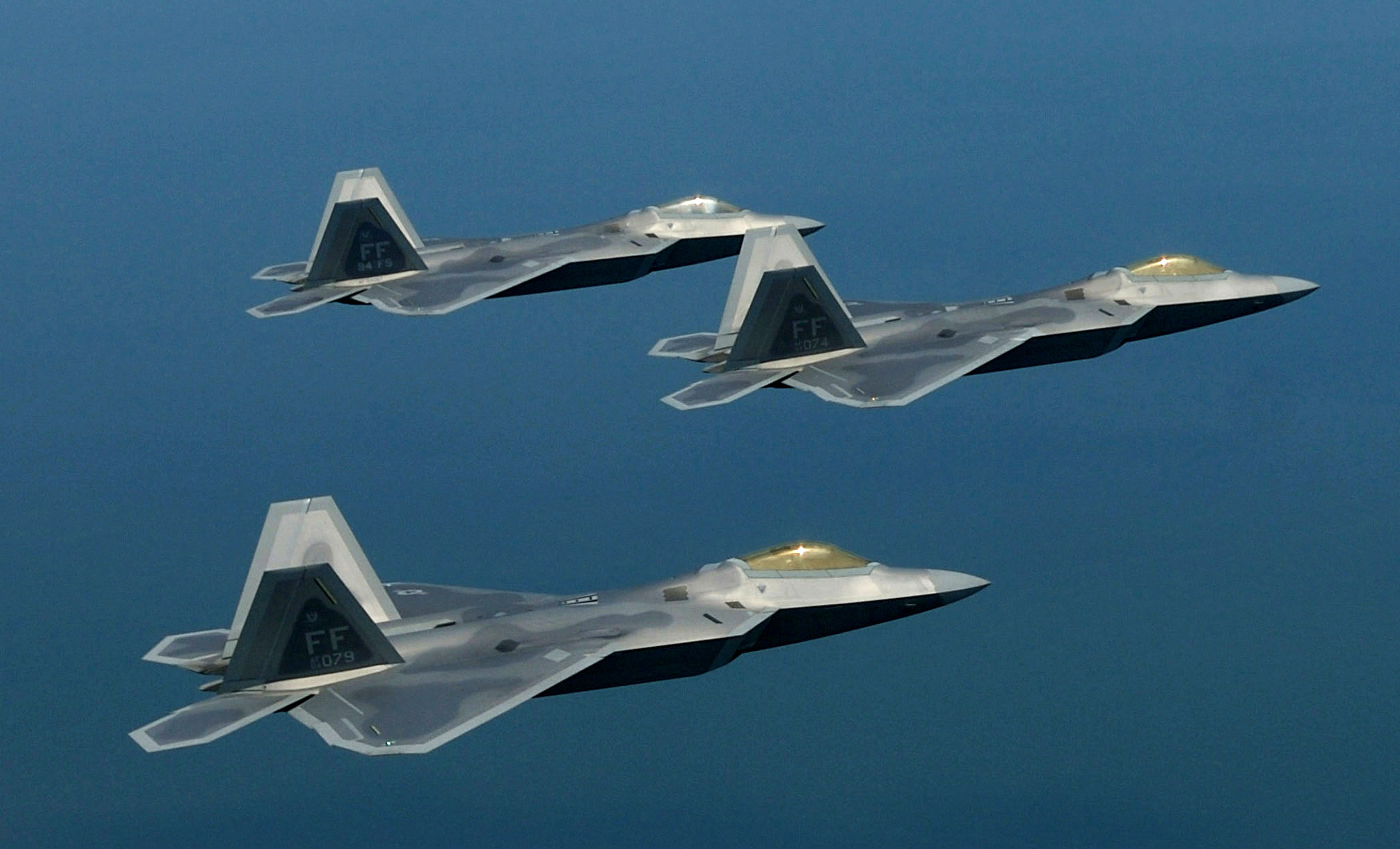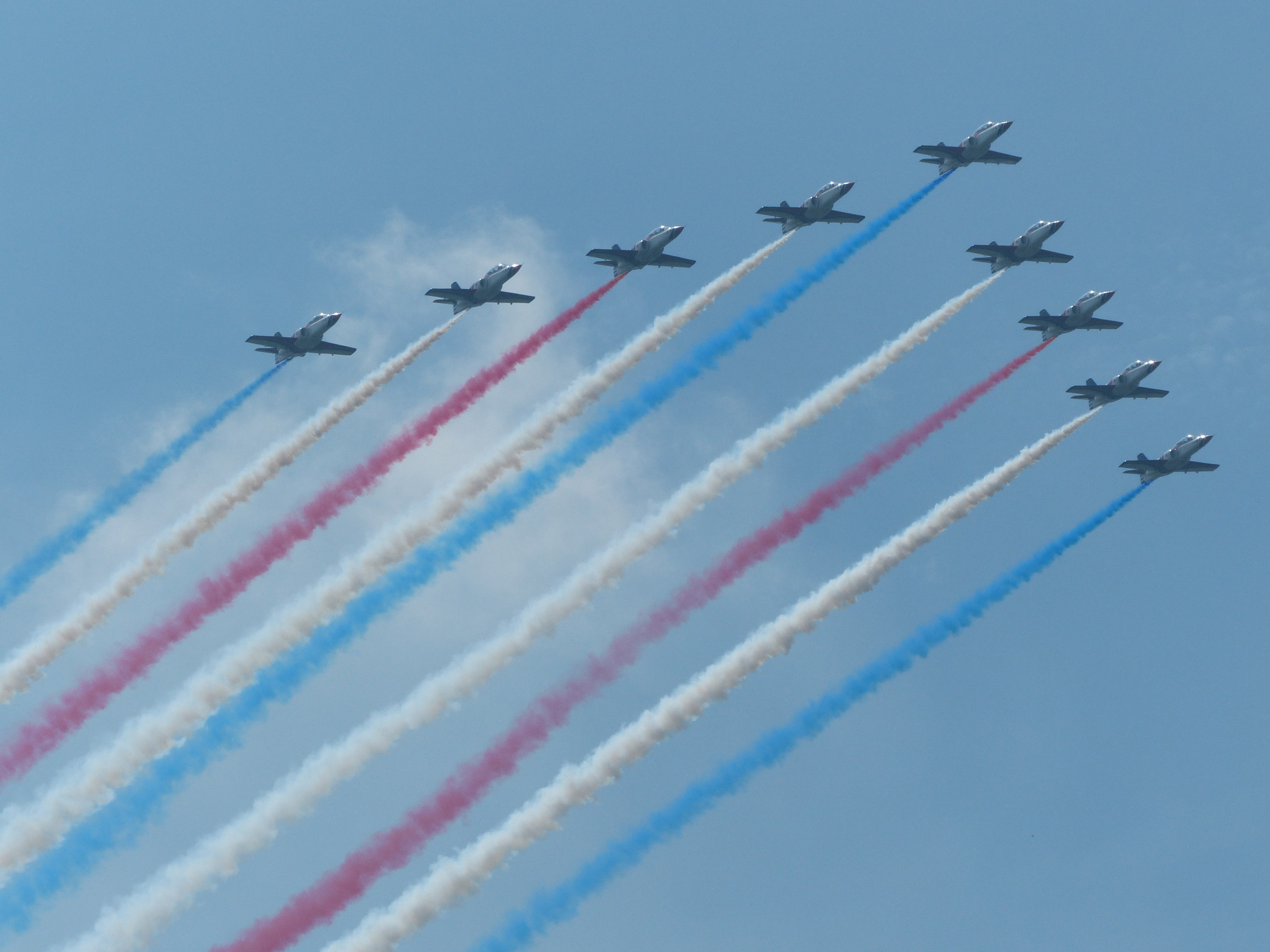Vee Formation on:
[Wikipedia]
[Google]
[Amazon]
 The Vic formation is a formation devised for
The Vic formation is a formation devised for
 In 1942 was the arrival of the
In 1942 was the arrival of the  The Vic formation remains in use today.
The Vic formation remains in use today.
 The Vic formation is a formation devised for
The Vic formation is a formation devised for military aircraft
A military aircraft is any Fixed-wing aircraft, fixed-wing or rotorcraft, rotary-wing aircraft that is operated by a legal or insurrectionary military of any type. Some military aircraft engage directly in aerial warfare, while others take on su ...
and first used during the First World War
World War I or the First World War (28 July 1914 – 11 November 1918), also known as the Great War, was a World war, global conflict between two coalitions: the Allies of World War I, Allies (or Entente) and the Central Powers. Fighting to ...
.
It has three or sometimes more aircraft fly in close formation with the leader at the apex and the rest of the flight ''en echelon
An echelon formation () is a (usually military) formation in which its units are arranged diagonally. Each unit is stationed behind and to the right (a "right echelon"), or behind and to the left ("left echelon"), of the unit ahead. The name of ...
'' to the left and the right, the whole resembling the letter "V". The formation's name is derived from the term that was then used for "V" in the RAF phonetic alphabet
The Allied military phonetic spelling alphabets prescribed the words that are used to represent each letter of the alphabet, when spelling other words out loud, letter-by-letter, and how the spelling words should be pronounced for use by the All ...
.
The formation is still in use but has been superseded or replaced in some circumstances.
History
At the start of theFirst World War
World War I or the First World War (28 July 1914 – 11 November 1918), also known as the Great War, was a World war, global conflict between two coalitions: the Allies of World War I, Allies (or Entente) and the Central Powers. Fighting to ...
, little thought had been given to the most efficient formations to use for military aircraft. Groups of fliers, drawn from the various nations' army or navy, would fly in columns, or line, ahead as if they were troops of cavalry or flotillas of ships. That was soon found to be inefficient for several reasons. Firstly, the leaders and their squadrons could not communicate with each other except for the vague instruction to follow the leader. Secondly, if they came under anti-aircraft fire from the ground, the flight would all turn at once, scattering the formation, or would follow the leader round a point, as horsemen or ships, which maintained cohesion but being exposed to fire on a fixed point.
The remedy was to fly in a close V formation, which allowed the aircraft to make a sudden 180 degree turn if they were fired upon, which would leave them flying out of danger with the formation intact but with their positions in the formation reversed.
The formation also allowed the fliers to see one another and communicate by hand signals and allowed them to stay together in poor visibility or cloud.
Later, when bomber and reconnaissance flights came under attack from fighter aircraft, the Vic proved to have good defensive characteristics. Pilots, looking inwards to maintain formation, could overlook one another for attackers, and their observer/rear gunners could use interlocking fire to protect one another.
The Vic was the basic flying formation adopted by every major air force. The French Air Force
The French Air and Space Force (, , ) is the air force, air and space force of the French Armed Forces. Formed in 1909 as the ("Aeronautical Service"), a service arm of the French Army, it became an independent military branch in 1934 as the Fr ...
referred to it as the ''Chevron'', and the Imperial German Army Air Service it was the ''Kette''.
It remained the standard formation throughout the interwar period and into the Second World War
World War II or the Second World War (1 September 1939 – 2 September 1945) was a World war, global conflict between two coalitions: the Allies of World War II, Allies and the Axis powers. World War II by country, Nearly all of the wo ...
.
The basic unit was the three-plane section in a Vic. Two sections made up a flight and two flights a squadron. Squadrons would fly in line astern, one Vic behind another, which left the squadron leader effectively the only person looking for the enemy.
At the outbreak of the Second World War, the Vic was still in use by both bombers and fighter formations in most air forces, but the Finnish and German air forces fighter units had changed to the more flexible and aggressive pair (''Rotte'') and four (''Schwarm'') combination. They comprised a pair (leader and wingman) and four (two pairs) in a “ finger-four” arrangement
The ''Luftwaffe
The Luftwaffe () was the aerial warfare, aerial-warfare branch of the before and during World War II. German Empire, Germany's military air arms during World War I, the of the Imperial German Army, Imperial Army and the of the Imperial Ge ...
'' pilots were disparaging about the RAF's use of the Vic formation during the Battle of Britain, but in practice, there was little else that Allied pilots could do. Germany, as the aggressor, had the choice of how and when to attack, and, based on its experience during the Spanish Civil War
The Spanish Civil War () was a military conflict fought from 1936 to 1939 between the Republican faction (Spanish Civil War), Republicans and the Nationalist faction (Spanish Civil War), Nationalists. Republicans were loyal to the Left-wing p ...
, it had changed and developed its tactics accordingly. Fighter Command
RAF Fighter Command was one of the commands of the Royal Air Force. It was formed in 1936 to allow more specialised control of fighter aircraft. It operated throughout the Second World War, winning fame during the Battle of Britain in 1940. The ...
could only improvise until the battle was over before it reviewed and made changes. As an interim method, RAF adopted the line astern formation on which four-plane flights flew behind one another. Luftwaffe related to them derisively by calling them ''Idiotenreihen'' ("rows of idiots")
Bob Oxspring, a pilot officer in 66 Squadron and a future ace, commented:
"We knew there was a lot wrong with our tactics during theIn addition, the primary purpose of Fighter Command was to intercept the bombers, which still flew in the defensive Kette and so the optimum formation for attacking them was a corresponding three-plane Vic so that each fighter would find itself against a different bomber. That was also the conclusion of the Luftwaffe later. When faced withBattle of Britain The Battle of Britain () was a military campaign of the Second World War, in which the Royal Air Force (RAF) and the Fleet Air Arm (FAA) of the Royal Navy defended the United Kingdom (UK) against large-scale attacks by Nazi Germany's air force ...but it was one hell of a time to alter everything we had practiced. We had not time to experiment when we were in combat three and four times a day. Moreover we were getting fresh pilots straight out of Flying School who were trained - barely - to use the old type of close formation – they simply could not have coped with anything radically different".
USAAF
The United States Army Air Forces (USAAF or AAF) was the major land-based aerial warfare service component of the United States Army and ''de facto'' aerial warfare service branch of the United States during and immediately after World War II ...
bombers in their box formations of massed Vics, German pilots reverted to the ''Kette'' to tackle them.
Some modifications were made by the RAF within the Vic structure. Pilots learned to open the formation, and the rearmost Vic in a Squadron was tasked with weaving to improve observation, but casualties from the weavers remained high.
When the campaign was over, Fighter Command experimented with and adopted the pair and four arrangements, but they could fly in echelon or in line astern to aid in identification.
Douglas Bader
Group Captain Sir Douglas Robert Steuart Bader, (; 21 February 1910 – 5 September 1982) was a Royal Air Force flying ace during the Second World War. He was credited with 22 aerial victories, four shared victories, six probables, one shared ...
, of 242 Squadron experimented with the finger-four arrangement and found it beneficial. By 1941, it was in general use in the RAF.Burns pp 150–152
 In 1942 was the arrival of the
In 1942 was the arrival of the US Army Air Forces
The United States Army Air Forces (USAAF or AAF) was the major land-based aerial warfare service component of the United States Army and ''de facto'' aerial warfare service branch of the United States during and immediately after World War II ...
, whose strategy was daylight bombing. Tight bomber formations relying on massed defensive fire were expected to win through to the target. The most basic formation for bombers was a three-plane "V", called an "element". Stacks of these elements were configured to form a defensive bombing formation called the "combat box
The combat box was a tactical formation used by heavy (strategic) bombers of the U.S. Army Air Forces during World War II. The combat box was also referred to as a "staggered formation". Its defensive purpose was in massing the firepower of the b ...
". The combat boxes, involving full squadrons, groups or entire wings, could produce huge firepower and offer mutual support, but casualties remained high without fighter escort.
 The Vic formation remains in use today.
The Vic formation remains in use today.
Notes
References
* Michael Burns: ''Bader: The Man and his Men'' (1990) * Norman Franks: ''Dog-Fight: Aerial Tactics of the Aces of World War I'' (2003) * Tony Holmes: ''Spitfire vs Bf 109'' (2007) * Alfred Price: ''Blitz on Britain 1939–1945'' (1977) ISBN (none) * Mike Spick: ''Luftwaffe Fighter Aces'' (1996) {{ISBN, 1 85367 560 1 Aerial warfare tactics Tactical formations Aerial maneuvers